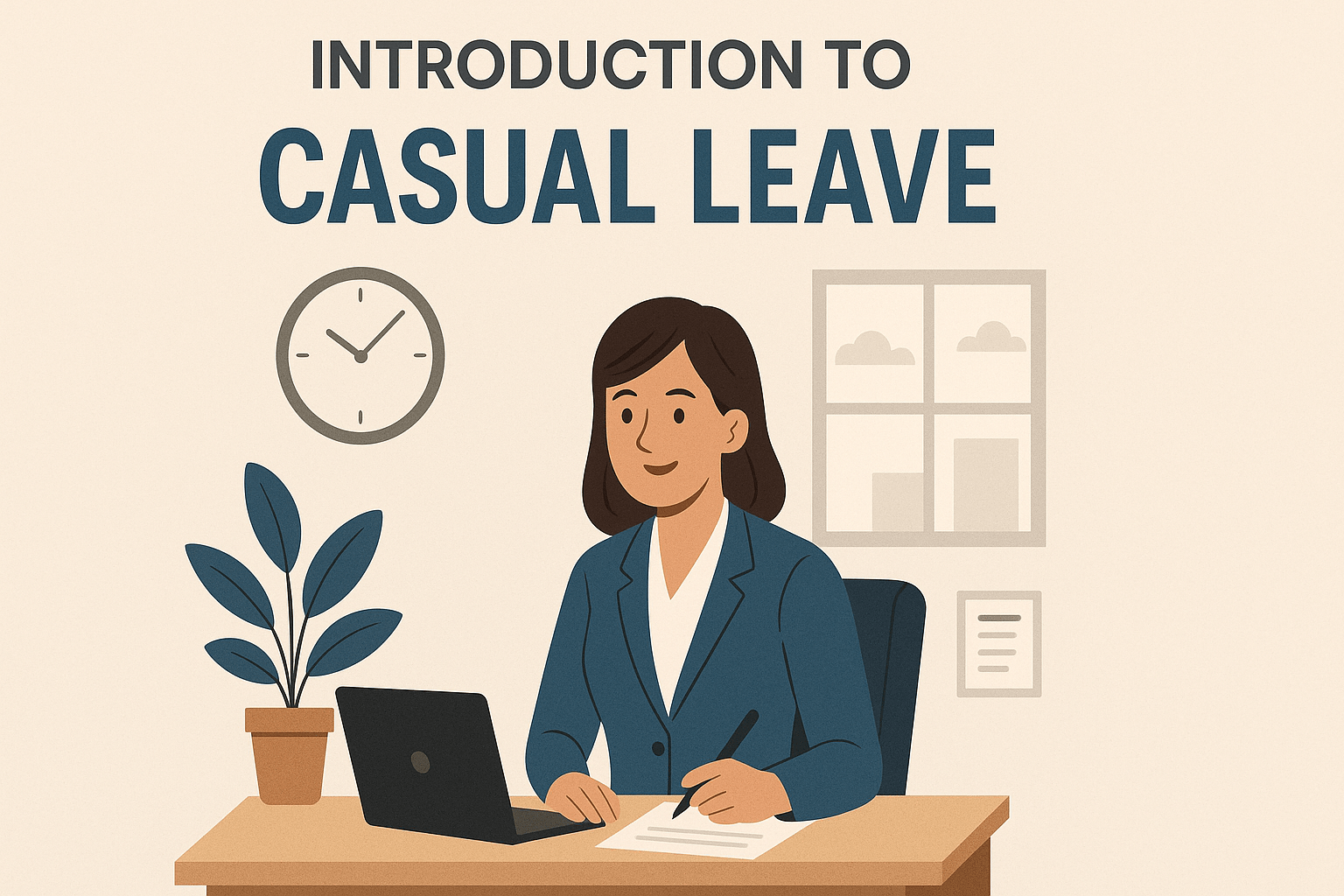Having to make your employees redundant is an unpleasant task to undertake – but, unfortunately, it’s a wholly necessary one. In fact, the survival of your business often depends upon it. In the event you need make redundancies, it’s best to follow the proper procedure, which means adhering to the formal process required for redundancy. Following a formal process is essential for legal compliance and helps ensure all official steps, such as consultation, are properly carried out.
This post takes a look at the concept of a redundancy consultation and the best way to approach them.
Introduction to Redundancy
Redundancy is a significant and often challenging event for any business, arising when an employer needs to reduce their workforce due to financial pressures, restructuring, or changes in business operations. In the UK, there are strict legal requirements that employers must follow to ensure the redundancy process is fair and transparent. Central to this is the redundancy consultation process, which involves both collective consultation and individual consultation with affected employees.
Employers must engage in collective consultation when proposing redundancies, especially if 20 or more employees are at risk within a 90-day period. This means consulting with employee representatives, such as trade union representatives or elected employee representatives, to discuss the reasons for the proposed redundancies, the number of employees affected, and the selection criteria used to select employees for redundancy. Providing written details and adequate support to affected employees is essential to ensure the process is handled with care and respect.
The consultation process is not just a legal requirement—it’s an opportunity for employers to explore alternatives to redundancy, consider suggestions from employee representatives, and demonstrate a genuine attempt to minimise the impact on staff. By consulting properly and involving both trade union and employee representatives, employers can help ensure that the redundancy process is as fair and transparent as possible.
What is a redundancy consultation period?
A redundancy consultation period is the time in which you have the necessary conversations and meetings with your staff about upcoming redundancies before you officially announce them.
While there is no fixed minimum consultation period for individual redundancies, a fair and meaningful consultation must still be conducted to ensure compliance with employment law and best practice.
The consultation period ensures that the redundancies don’t come completely out of the blue and (somewhat) softens the blow for your staff. It also gives those affected, or those who suspect they’ll be affected, a chance to assess their options and look for new employment.
Better still, by communicating with your staff, honestly and frequently, you can preserve as much goodwill as the situation will allow.
Things discussed during those meetings include:
- What redundancies need to be made and why
- Which employees are likely to be made redundant
- How you’re going to decide who’s to be made redundant
It is important to consult employees directly during redundancy consultations and ensure that each employee affected is given the opportunity to participate and express their views.
If you’re making more than 20 people within 90 days, you’re legally obligated to have group consultations. However, it’s best to have group consultations regardless of how many employees you’re making redundant. Furthermore, redundancy consultations should include both collective and individual redundancy consultation to ensure all legal requirements are met, and you should also have individual consultations where you address each employee’s specific queries and concerns.
By following these steps, you can ensure a minimum consultation that meets legal standards and provides meaningful dialogue with every employee affected.
Individual Consultation
Individual consultation is a vital part of the redundancy process, ensuring that every employee at risk of redundancy is given the opportunity to discuss their situation directly with their employer. Regardless of how many redundancies are proposed, employers must hold individual consultations with all affected employees. During these meetings, employers must provide clear, written information about the reasons for the proposed redundancies, the selection criteria used, and the employee’s entitlement to statutory redundancy pay.
This stage of the process allows individual employees to ask questions, raise concerns, and suggest alternatives to redundancy. Employers must listen carefully to feedback and consider any proposals that could help avoid or reduce redundancies. Individual consultation should be meaningful, timely, and tailored to each employee’s circumstances, ensuring that everyone understands their rights and the steps being taken.
By conducting thorough individual consultations, employers not only meet their legal obligations but also help to maintain trust and transparency throughout the redundancy process. This approach supports fair selection and helps reduce the risk of claims for unfair dismissal or failure to consult.
How long is a redundancy consultation period?
The length of a redundancy consultation period depends on how many redundancies you’ll be making.
- 20 or fewer redundancies: No minimum time.
- 20 – 99 redundancies: 30 days
- 100 or more redundancies: 45 days
For collective redundancies, the consultation must begin at least 30 or 45 days before the first dismissal, depending on the number of planned redundancies at a single establishment. The required days before any dismissals are critical for legal compliance, and these rules apply to both collective and individual consultations.
How much notice do you have to provide when making an employee redundant?
After the redundancy consultancy is finished, you still need to provide each employee with notice. Notice periods should not begin until the consultation process is complete and the first dismissal has been confirmed.
Before issuing notice of redundancy, employers should consider offering alternative employment to employees as a way to mitigate job losses.
The length of the notice period depends on how long an employee has worked at your company:
- Between 1 month and 2 years: 1 week
- Between 2 years and 12 years: 1 week for every year of employment
- More than 12 years: 12 weeks
Again, as with the length of the redundancy period, these are statutory notice periods so you can increase them, if necessary.
What to do if you make an employee redundant
If you’re making redundancies, you’ll need to provide written details to each employee about the redundancy situation, including the reasons for redundancy, the process for selecting employees, and all relevant procedures.
- The reasons for the redundancies
- How they’ve been determined
- The numbers of employees to be made redundant
- Areas of the business that will be affected
- How the redundancy process will work
- How they’ll be compensated
- The process for selecting employees and the criteria used
Employers should also support the person redundant by providing information and assistance to help them find a new job or access retraining opportunities.
Calculating final redundancy payments
After finalising which of your staff are to be made redundant and discussing it with them, you need to arrange the affected staff’s final redundancy payments.
Employers must notify the redundancy payments service about proposed collective redundancies and address any redundancy related issues that may arise during the payment process, ensuring compliance with legal requirements.
This payment can be composed of up to three parts:
- Redundancy payment
- Payment in lieu of notice
- Outstanding annual leave allowance
Statutory redundancy pay
This is the payment each employee receives as a direct result of being made redundant. The amount is based on a person’s age, weekly salary and how long they’ve worked for the company. An employee will receive:
- 22 years old or younger: 0.5 week’s pay for each year of employment
- 22 – 41 years old: 1 week’s pay for each year of employment
- 41 years old and older: 1.5 week’s pay for each year of employment
- Employees only qualify for redundancy pay if they’ve worked at the company for a minimum of 2 full years.
- Staff are only entitled to redundancy pay for every full year of employment. E.g., someone who’s been with the company for 2 years and 5 months is entitled to 2 years’ worth of payments.
- An employee’s weekly pay is their average salary per week over the last 12 weeks before they received their redundancy notice
Agency workers may have different entitlements and should be considered separately during the redundancy process.
You can work out the amount each employee is entitled to with this redundancy calculator. Also, it’s important to note that everything outlined above only applies to statutory redundancy payments. You may pay your departing staff more (and for partially worked years, etc.), as per their employment contract.
Employers should not rehire a person made redundant in the foreseeable future unless the redundancy was genuinely necessary, to ensure compliance and demonstrate that the decision was based on the company’s future outlook.
Payment in lieu of notice
If it’s part of your company’s policy for employees not to work their notice period, i.e., if you don’t want them to handle sensitive information, you can arrange for them to receive payment in lieu of notice (pilon). This will be the entirety of the pay they would have earned during their notice period.
Note: Pilon is different than gardening leave, where the employee stays at home but is still contracted to the company. In this situation, they can seek employment elsewhere immediately.
Outstanding annual leave allowance
If an employee is working their notice period and not receiving pilon, they can still take annual leave during their notice period. However, if they have any outstanding annual leave at the end of their notice period, you’ll have to calculate the corresponding monetary amount and add it to their final salary payment. This will be simple if you use a staff holiday planner that tracks and updates annual leave allowances for you. If, on the other hand, you have a system for booking annual leave that often relies on someone manually tracking outstanding holiday allowances, this could prove more difficult. In such a scenario, if you’re making a lot of redundancies, this could be particularly time-consuming.
Protective Award
A protective award is a financial penalty imposed on employers who fail to carry out proper collective consultation or individual consultation during the redundancy process. If an employer makes employees redundant without following the required consultation procedures, affected employees can bring a claim to an employment tribunal within the specified time limit. If the tribunal finds that the employer did not consult properly, it can order the employer to pay a protective award—up to 90 days’ pay per affected employee.
The protective award is designed to compensate employees for the employer’s failure to consult and to encourage employers to comply with collective consultation rules. It applies whether the employer failed to consult with trade union representatives, elected employee representatives, or individual employees. To avoid the risk of a protective award and other penalties, employers must ensure that all consultation requirements are met, including providing written details, engaging in meaningful consultation, and allowing adequate time for the process before any dismissals take effect.
By following the correct redundancy consultation process and consulting properly with all affected employees, employers can minimise the risk of legal claims and demonstrate a commitment to fair and lawful treatment during periods of organisational change.




